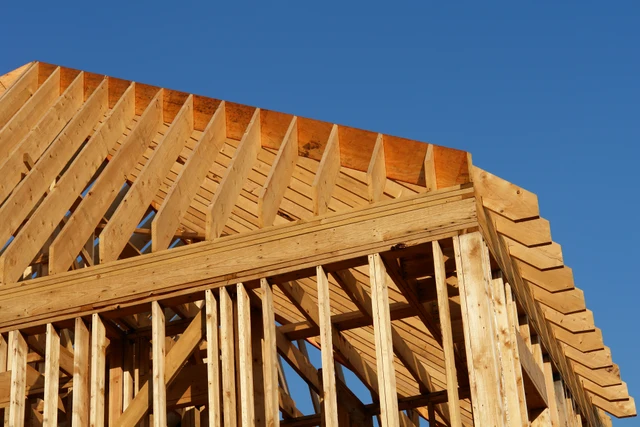
The Trump administration’s latest tariffs on housing materials could raise the average cost of building a single-family home by nearly $9,000, according to a report Tuesday from UBS.
Research analyst John Lovallo said the new levies include “an incremental 10% Section 232 tariff on softwood timber and lumber imports, as well as 25% levies on kitchen cabinets, vanities and upholstered wood products.”
UBS estimates the lumber tariff will add about $720 per home, while cabinet and vanity tariffs could tack on another $280. Upholstered wood products were not included in the calculation because they are generally purchased by homeowners rather than builders.
“As a result, we now estimate the total tariff impact on the cost to construct an average home at approximately $8.9K,” Lovallo wrote.
That represents an increase from UBS’s July forecast of $7,900 per home. He noted the administration is also considering raising cabinet tariffs to 50%, though he expects the effect on construction costs to be “minimal.”
Costs likely to be shared
Lovallo argued that the added costs won’t fall on one group alone.
“Importantly, we continue to believe this cost impact will be spread throughout the entire housing value chain, with the builders perhaps best positioned to push back on suppliers,” he said.
Publicly traded builders, in particular, may have the leverage to limit their exposure.
“The public homebuilders are best positioned given significant bargaining leverage with suppliers provided by size/scale advantages (top 16 public builders controlled about 47% share of new construction as of 4Q24 vs roughly 25% in 4Q13),” Lovallo wrote.
Potential offsets
UBS also pointed to possible mitigating factors. The U.S. Lumber Coalition estimates that American mills could replace 95% of Canadian imports, given that capacity utilization was only in the low-to-mid 60% range in early 2025, according to the National Association of Home Builders. In addition, President Trump has ordered a 25% increase in timber production from federal lands.
“In our view, the combination of these factors could help offset some of the pressure from lumber duties,” Lovallo said, while cautioning that the overall tariff environment remains unsettled. “It is very important to appreciate the fluidity of the entire tariff situation and understand that the degree of ultimate levies could vary dramatically from what is anticipated today.”